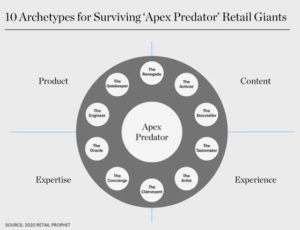Story
What is user-driven innovation – and what is not?


Have you noticed the surge in user-driven innovation? Or rather – the surge in companies and consultancies who say that they do user-driven innovation?
Well, I have and it’s causing me a great deal of concern. ‘Why, isn’t user-driven innovation a good thing?’, you might ask. Yes, it is. Only, most of these companies and consultancies aren’t actually doing user-driven innovation. And this is creating problems for the real user-driven innovation, ultimately watering down the concept and its value.
User-driven innovation (UDI) means that a firm involves its users directly in the product creation process (‘innovation’ could also be innovation in eg processes or eg communication through user-driven content or facilitation of peer2peer communication, but in this post I will refer to UDI as products/services development). There are three main ways of doing that:
- Co-creation – inviting a number of specific users, often lead users, to create new products with the company’s own designers. Example: LEGO Mindstorms.
- Customization – facilitating that the user can design his own product based on a number of features and material combinations that the company makes available. Example: Nike ID, Timbuk2.
- Crowdsourcing – outsourcing product design entirely to the users. Example: Threadless.
There are lots of hybrids of the three categories above but for the sake of simplicity, let’s stick with these. The point is that with UDI there are levels of user-involvement – and reversely, levels of brand control – but all of them involve direct user participation in the product creation.
And certainly, embarking on any of these three requires full understanding of the strategic, operational, and intra-cultural implications – and a plan and desire to deal with them.
For companies born as UDI based companies, like Threadless, these challenges are less of an issue since their entire business is engineered towards facilitation of UDI – it simply is their business model.
For established companies, like LEGO where I headed up the customization and co-creation business unit for a while, UDI represents issues pertaining to virtually all parts of the company. From sourcing policies, supply chain processes, IT systems, forecasting methodology, product quality standards, legal and IPR matters, corporate culture and HR, success criteria and KPI definition, to brand control policies, marketing principles and so on and so forth.
Simply put, UDI represents a different way of doing business.
But what seems to be happening is that UDI is being reduced to either the upstream research or the technology platforms that enable mass-participation. Let me explain:
Lately, I’ve run into more and more consultancies and agencies who position themselves as UDI companies. But what they do is conducting research on behalf of a client that involves asking users what they want and then coming up with product concepts based on this input.
But that is not UDI. That’s market research. ‘Oh, but we go out and ask the users in their own environment and study how they use the products and bring back their input’, they say. That is not UDI either. That’s anthropological market research. Something that most companies ought to do on a regular basis, yes, but UDI it ain’t.
Anthropological research does not equal UDI any more than a cat and a dog equal a zoo.
Same thing with the tech platforms. Just because a software firm develops a CMS or a set of apps that enable user participation does not mean that this firm ‘makes UDI’. In fact, no agency or consultancy actually ‘does’ UDI. Only companies whose users are directly involved in the product or service creation can claim that they ‘do’ UDI.
We have to understand that UDI is a business model and requires a business system and a company culture that underpins it.
We have to understand that the UDI business model means measuring success differently, designing new processes for the product development, figuring out new reward systems, applying new principles to marketing and branding of the products, changing ERP systems and data flow, aligning the internal interests – and, if we’re talking about established companies, perhaps also considering whether UDI should be an integrated part of the company or be developed as a separate entity that operates entirely with its own value chain set-up.
UDI requires sticking one’s hands deep into the engine room to understand the operational ins and outs, as well as loosening the grip on the brand and allow its users to bring their interpretation forward. It can seem a bit scary but the better you know your business and the more confident you feel as a brand, the easier it is.
The rewards come in the form of happier users, more loyal users, higher-value users, users that will spread the word. And in the form of ongoing market and user insights, and – if you do it right – more streamlined internal processes, a more agile business operation, and a more change-ready organization.
These rewards, however, only come if we understand that UDI involves the entire value chain and corporate culture, not simply upstream research, as user-centred as it may be, product concepts derived from it and a software platform to facilitate it.





